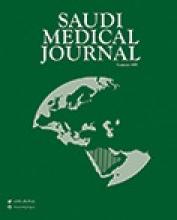Abstract
OBJECTIVE: The present study was designed to study the effects of welding fumes on maximal voluntary ventilation (MVV) and to determine its severity in relation to duration of exposure. Additional objective was to reduce the potential health risks of welding workers by providing them with information concerning the hazards of welding fumes.
METHODS: This study was conducted in the Department of Physiology, Basic Medical Sciences Institute, Jinnah Post Graduate Medical Centre, Karachi, Pakistan in 1999. In this study, the MVV was studied in 50 male control subjects and 50 male arc welding workers and all participants were non-smokers with an age range of 20-60 years. The subjects were matched for age, height, weight and socio-economic status. Maximal voluntary ventilation test was performed by using an electronic spirometer and results were compared by a paired t-test.
RESULTS: Welding workers showed a significant reduction in MVV relative to controls.
CONCLUSION: We conclude that MVV in welding workers is significantly decreased as compared to their matched controls. Stratification of results by years of welding shows a dose-response effect of years of welding on lung function.
- Copyright: © Saudi Medical Journal
This is an open-access article distributed under the terms of the Creative Commons Attribution-Noncommercial-Share Alike 3.0 Unported, which permits unrestricted use, distribution, and reproduction in any medium, provided the original work is properly cited.






